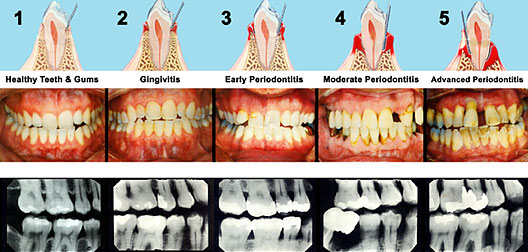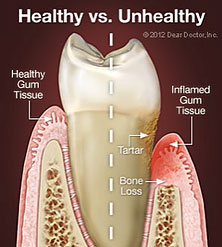What is Periodontal Disease?
Healthy gums not only look great – they are essential for good overall oral health. But more than 80% of Americans have a silent disease that can damage the teeth, gum and jawbone.

Periodontal (Gum) diseases are infections of the gums, which gradually destroy the support of your natural teeth. Typically, periodontal diseases are a result of dental plague. Bacteria found in dental plaque can produce toxins (poisons) which irritate the gums. They may cause the gum tissue to turn red, swell and bleed easily. This condition is known as gingivitis. If this irritation is prolonged, the gums separate from the teeth and cause spaces (often called pockets).I’m a paragraph. Click here to add your own text and edit me. I’m a great place for you to tell a story and let your users know a little more about you.
In addition to releasing harmful bacteria into the mouth, plaque can often harden into a rough, porous substance called dental calculus (tartar). Tartar can form above and below the gum line, and can break down the structures that support the teeth.
 If periodontal diseases progresses too long, the supporting gum tissue and bone that holds teeth in place deteriorate – which ultimately leads to tooth loss. The remaining teeth can shift, loosen or fall out, and the supporting bone could be destroyed.
If periodontal diseases progresses too long, the supporting gum tissue and bone that holds teeth in place deteriorate – which ultimately leads to tooth loss. The remaining teeth can shift, loosen or fall out, and the supporting bone could be destroyed.
That’s why it’s so important to get periodontal treatment as early as possible. The sooner our team can treat the problem, the less the overall damage will be.
